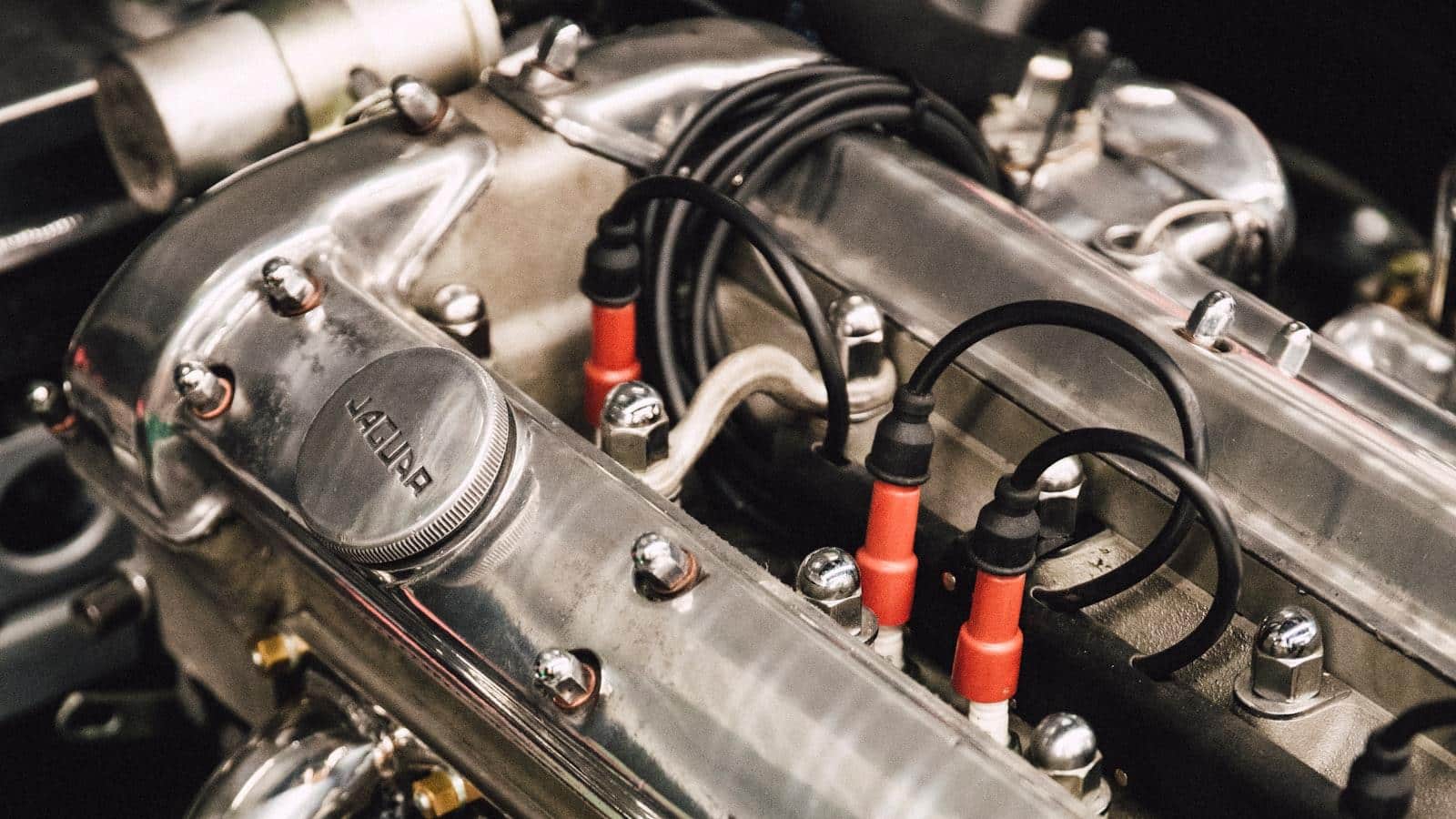Transforming raw materials into a product with a flick of the magic wand, akin to an alchemist conjuring gold, has been the fantasy of manufacturers for centuries. Though reality is not as simple as a fairytale, innovators and mavericks in manufacturing have dared to dream beyond the average. They have dared to innovate, pushing the boundaries, exploring the depths of manufacturing processes. As we pull back the curtain on their glittering world, we invite you on a journey to explore these innovative manufacturing processes – the symphony of modern-day alchemy that allows us to produce faster, cheaper, and better. Hold your breath as we delve into a realm where dreams are wrought into realities, where innovation is the currency that changes the game. The spotlight is turned on, the stage is yours. Welcome to ‘Innovate Manufacturing Processes,’ your passport to the future.
Exploring the New Age of Innovative Manufacturing Processes
In the modern age of globalization and fierce competition, businesses are continually pushed to develop more efficient and cost-effective ways of producing goods. One of the most game-changing aspects is the introduction of innovative manufacturing processes. These novel processes utilize smart technologies, lean manufacturing principles, advanced materials and collaborative practices to elevate productivity levels while reducing operating costs.
Notably, a few such groundbreaking processes have emerged. These include
- 3D printing: also known as additive manufacturing, radically changes the way we conceptualize, design and manufacture products. Now, complex parts can be built layer by layer from a variety of materials including metal, plastic, ceramics and more – offering unprecedented manufacturing flexibility.
- Machine learning: it isn’t just for digital processes. Machine learning can optimize manufacturing operations, identify inefficiencies, and predict maintenance needs before failures occur. This drastically decreases downtime and thus, boosts overall productivity.
- Internet of Things (IoT): IoT devices can gather and analyze massive amounts of data in real-time, providing valuable insights on operations and helping to streamline manufacturing processes. The value addition of IoT is tremendous and thus, cannot be overstated.
- Robotics and automation: robots can handle repetitive tasks with speed and accuracy far beyond human capacity. Plus, automation increases safety as it reduces the need for human intervention in potentially dangerous tasks.
Let’s illustrate how these processes have facilitated enhanced efficiency in manufacturing in the table below:
| Manufacturing Process | Efficiency Improvement (%) | Cost Saving (%) |
|---|---|---|
| 3D Printing | 55 | 35 |
| Machine Learning | 50 | 40 |
| IoT in Manufacturing | 60 | 45 |
| Robotics and Automation | 70 | 50 |
In conclusion, businesses must explore and implement these innovative manufacturing processes to stay ahead of competition and yield substantial profitability and growth.

Harnessing the Power of Advanced Techniques in the Manufacturing Sector
As we navigate the new horizons of the manufacturing landscape, differentiating your organization from others requires innovative techniques, an understanding of which technologies and processes can boost productivity, and the skill to implement them efficiently. Today, AI and IoT are not just buzzwords but are reshaping the manufacturing sector. From market research to decision-making, they help in every stage of the manufacturing lifecycle. Whether it’s about enhancing precision, quality control, or data management, implementing advanced manufacturing techniques will help you harness the power of your production line, making your manufacturing processes more innovative and productive.
- Additive Manufacturing (3D Printing): This method enables manufacturers to construct complex geometries that conventional techniques cannot replicate. It makes the manufacturing process more flexible, cost-effective and efficient.
- Industrial Internet of Things (IIoT): IIoT connects machines, individuals, and data to bring about real-time insights. It automates the manufacturing process, minimizes downtime by predicting failure, and facilitates preventive maintenance.
- Artificial Intelligence (AI): AI, especially Machine Learning (ML) and its subset, Deep Learning, have become integral parts of the manufacturing sector. They automate processes, improve quality control, and facilitate predictive maintenance.
- Robotics and Automation: These technologies enhance productivity, reduce human error, and perform high-precision tasks. They also help in maintaining a safer work environment.
| Technology | Benefits |
|---|---|
| Additive Manufacturing (3D Printing) | Construct complex geometries, cost-effective, efficient |
| Industrial Internet of Things (IIoT) | Real-time insights, predictive maintenance |
| Artificial Intelligence (AI) | Automation, improved quality control, predictive maintenance |
| Robotics and Automation | Enhances productivity, reduces human error, high-precision tasks |
Driving business value and building a sustainable competitive advantage is not about just incorporating these technologies but using them efficiently and smartly. Embracing them requires a well-thought-out strategy, including a clear vision aligned with business targets, an underlying robust digital infrastructure, and a culture of continuous innovation.
Streamlining Operations with a Focus on Efficient Systems
The world is witnessing a paradigm shift in the manufacturing arena. We are transitioning from mass production models to personalized, on-demand production. This industry transformation is driven by technological advancements, primarily in the realms of automation, machine learning, augmented reality, and robotics. As manufacturers, it is essential to understand and harness these technologies to streamline operations and maximize efficiency.
Efficient manufacturing systems focus on reducing waste – be it in terms of time, resources, or energy. It is more than just using automated machinery and fast processes. Eco-efficiency and process optimization are key elements in an efficient manufacturing system. In addition, real-time monitoring, predictive maintenance, and quality control also play vital roles in streamlining operations.
- Eco-efficiency: Adopting sustainable practices like reducing energy consumption, recycling raw materials, and minimizing waste.
- Process optimization: Identifying bottlenecks and optimizing process flow to increase productivity.
- Real-time monitoring: Leveraging IoT (Internet of Things) devices and platforms for real-time tracking and data analysis.
- Predictive maintenance: Using sophisticated algorithms and machine learning to predict machinery issues before they happen, to avoid costly downtime.
- Quality control: Implementing stringent quality checks and controls to ensure superior product quality.
| Operation | Description | Benefits |
|---|---|---|
| Eco-efficiency | Sustainable manufacturing practices | Excellent environmental stewardship, cost efficiency |
| Process Optimization | Systematic improvement of manufacturing process | Increase productivity, reduce waste |
| Real-time Monitoring | Utilization of IoT devices for real-time data analysis | Instant insights, predict and prevent failures |
| Predictive Maintenance | Use of AI to predict machinery issues | Prevent costly downtime, extend machine lifecycle |
| Quality Control | Strict checks and controls to ensure superior product quality | Customer satisfaction, brand reputation |
In conclusion, an effective and efficient manufacturing system encompasses a series of synchronized processes and technologies, all aligned towards a single goal: producing excellent quality products while minimizing waste and maximizing productivity. This calls for a creative approach, adaptability, and commitment to constantly stay abreast of emerging trends and technological advancements that can transform the manufacturing landscape.
Introducing the Revolution: Enhancing Production with WorkFlow360 CRM
The business world is undergoing a technological revolution and manufacturing is certainly no exclusion. With the introduction of WorkFlow360 CRM, your enterprise will have the tools to streamline production processes, increase efficiency and outperform competition like never before. This platform is an ultimate game changer that leverages advanced features and easy integration capabilities that breathe innovation into your manufacturing processes.
The WorkFlow360 CRM is designed to bring high value business functionalities into one convenient platform. Here are a few of the outstanding features:
- Process Automation: Automate repetitive tasks and reduce manual labor.
- Data Analytics: Generate insightful reports and make data-driven decisions.
- Inventory Tracking: Real-time visibility into your inventory counts.
- Customer Support: Improve customer relationships with efficient and personalized attention.
It goes without saying that the implementation of such a versatile tool can greatly enhance your overall output. This does not only yield better results, but also leads to cost savings and increased profits.
| Features | Benefits |
|---|---|
| Process Automation | Increased efficiency, time saving |
| Data Analytics | Informed decision making |
| Inventory Tracking | Real-time visibility, reduced discrepancies |
| Customer Support | Enhanced customer satisfaction, Increased retention |
Transition into the future of manufacturing with WorkFlow360 CRM and witness measurable results, alongside increased satisfaction from both your team and your customers.
Optimizing the Manufacturing Landscape with WorkFlow360 CRM’s Solutions
In the digitally advanced era, businesses can witness substantial benefits by incorporating technology in their operations, particularly in manufacturing processes. Among different technological solutions, WorkFlow360 CRM stands out with its innovative solutions specifically designed to streamline manufacturing activities.
The optimal use of this CRM tool can significantly enhance productivity, reduce cost, and improve product quality. Some key solutions such as automated task scheduling, efficient inventory management, enhanced logistics tracking, and proactive preventive maintenance can provide impressive improvements. Let’s delve into the standout features and benefits:
- Automated Task Scheduling: Facilitates the scheduling and tracking of tasks, ensuring that projects and assignments are completed within deadlines and resources are optimally utilized.
- Efficient Inventory Management: Provides real-time visibility into inventory levels and usage, helping to avoid shortages and stock-outs, and reduce carrying costs.
- Enhanced Logistics Tracking: Facilitates transportation and logistics tracking to ensure on-time deliveries and reduce customer complaints.
- Proactive Preventive Maintenance: Incorporates predictive analysis to identify potential equipment failures before they happen, leading to reduced downtime, improved safety and extended life of equipment.
The table below provides a snapshot of how WorkFlow360 CRM solutions assist and improve manufacturing processes:
| Solution | Impact |
|---|---|
| Automated Task Scheduling | Boosts productivity, optimizes resource utilization |
| Efficient Inventory Management | Prevents stock shortages, reduces costs and wastage |
| Enhanced Logistics Tracking | Ensures timely deliveries, reduces customer complaints |
| Proactive Preventive Maintenance | Minimizes equipment downtime, extends equipment usage |
Thus, integrating WorkFlow360 CRM’s Solutions in manufacturing processes can fuel up the production process and create a more agile, responsive and efficient manufacturing unit.
Maximising Efficiency with Specific Recommendations
Innovative manufacturing invites the need for efficient operations. You can maximise efficiency in your manufacturing processes by adopting concrete and careful strategies. Precision is essential for the smooth function of your processes. Hence, deciding where you can simplify operations will be key in ensuring efficient productivity. Through adjustments in factory layout, technological integrations, or revised labour force strategies, you can reap increased output and lower costs.
For example, the factory layout can be redesigned with lean principles in mind, minimising the distance between processes. Similarly, adopting technology such as automation and robotics can increase the speed and accuracy of manufacturing tasks. Additionally, workforce training can ensure skilled labour availability, thus increasing productivity. See these recommendations detailed in the table below.
| Recommendation | Benefit |
| Factory layout redesign | Minimises distance and time wasted |
| Technological integration | Increases speed and accuracy |
| Workforce training | Ensures skilled labour and productivity |
At the heart of maximising efficiency is the conscientious reduction of waste. This entails identifying and eliminating non-value adding tasks from your processes. Such changes could involve a more intensive focus on quality control, adopting just-in-time production approaches, or making use of resource management software to track and reduce waste. Cultivating a culture of continuous improvement within your workforce also plays a significant role. When each member of your team is motivated to identify and combat inefficiencies as they arise, your manufacturing processes will inevitably become more streamlined.
- Greater focus on quality control
- Adoption of just-in-time production
- Utilisation of resource management software
- Cultivating a culture of continuous improvement
Each of these steps takes you closer to a lean and efficient manufacturing operation, where wastage is minimised, and productivity amplified. By innovatively rethinking your manufacturing processes, you position your operations for increased efficiency and profitability.
How WorkFlow360 CRM Propels Manufacturing towards Future Readiness
In the constantly evolving manufacturing industry, harping on advanced tools and technology is no longer a luxury but a necessity. Among these tools, CRM tools like WorkFlow360 have emerged as game-changers. These tools are equipped to deal with all the aspects of customer relationship management, right from marketing and sales to aftersales services. More importantly, they come in handy in propelling manufacturing businesses towards future readiness by enhancing efficiency, improving customer satisfaction, and driving growth.
With their dynamic capabilities, these CRM tools have the potential to transform traditional manufacturing processes into future-ready practices. For instance, WorkFlow360 offers greater visibility into the manufacturing processes, aiding in critical decision-making. It meticulously tracks and manages the product lifecycle right from the initial conceptualizing stages to production and distribution phases. Additionally, its unique Lead Scoring feature helps identify potential customers, ensuring a steady inflow of orders. Combined with its ability to manage customer complaints effectively, these features certainly establish WorkFlow360 as an indispensable tool of the industry.
- Improved Efficiency: WorkFlow360’s ability to integrate with other systems allows seamless data flow, significantly bringing down the time spent on manual tasks.
- Customer Satisfaction: By facilitating prompt and effective customer service, the tool enhances customer satisfaction levels.
- Growth: The tool provides detailed insights into customer behavior, aiding in formulating strategies to drive growth.
| Features | Benefits |
|---|---|
| Greater Visibility | Relevant insights for effective decision-making |
| Lead Scoring | Identifies potential customers to ensure a steady flow of orders |
| Effective Complaint Management | Enhances customer satisfaction, loyalty, and retention |
In conclusion, the adoption of a robust CRM tool like WorkFlow360 is not just innovative, but necessary for manufacturing entities to remain competitive and future-ready in this ever-evolving market landscape.
Pioneering Innovation in Manufacturing: The WorkFlow360 CRM Advantage
Today’s manufacturing industry is experiencing groundbreaking shifts in the way business processes are executed, thanks to the advent of innovating CRM platforms like WorkFlow360. This platform presents an integrated suite of applications designed specifically to optimize process efficiency and boost productivity in manufacturing systems. It comes loaded with a plethora of features aimed at revolutionizing the way manufacturers work, consolidating every process from supply chain management, order processing, to customer relationship management.
Today, let’s take a deeper dive into some of the key advantages of using WorkFlow360:
- Streamlined Supply Chain: Through its intelligent modules, WorkFlow360 makes it easier to manage procurement, storage, and distribution of materials. Producers gain tectonic control over their inventory, allowing for real-time tracking and optimal usage of resources.
- Efficient Order Processing: Seamless integration of sales, production, and delivery reduces the turnaround time and improves order fulfillment. Data-driven insights by the platform facilitate better planning and execution of workflows.
- Enhanced Customer Engagement: By centralizing customer information and engagement activities, the platform empowers businesses to deliver personalized and immediate service, thereby fostering a loyal customer base.
Now let’s take a look at how WorkFlow360 outpaces other CRM platforms in relation to these features.
| Features | WorkFlow360 | Other CRMs |
|---|---|---|
| Supply Chain Management | Real-time tracking, Inventory control | Basic inventory management |
| Order Processing | Data-driven planning, Reduced turnaround | Manual planning, Longer turnaround |
| Customer Engagement | Personalized service, Immediate response | Generic service, Delayed response |
As evident, WorkFlow360 leads in the race of technological innovation for manufacturing business processes, paving the way for a more efficient and profitable manufacturing paradigm.

Driving Manufacturing Excellence with WorkFlow360 CRM’s Technology
Manufacturing excellence is no longer a game of harder efforts and minor tweaks; instead, it is a result of intelligent digitization and process automation. Creating a digital twin of your physical manufacturing process can help identify the bottlenecks, streamline the workflow, and increase efficiencies. Creative use of WorkFlow360 CRM’s technology, such as real-time data gathering, AI-based analysis, and smart automation capabilities, paves the path to supreme manufacturing proficiency.
The core features of WorkFlow360’s CRM technology include:
- Real-Time Data Capture: Collect and analyze manufacturing data in real-time, gaining insights, tracing errors, and adjusting strategies on-the-fly.
- AI-Based Decision Making: The AI algorithms help process unstructured data, detect patterns, and make objective decisions with minimum human interference.
- Process Automation: Automate routine and repetitive tasks, freeing up human resources for creative and strategic tasks.
Integrating WorkFlow360’s CRM technology into your manufacturing process can be a significant change catalyst. Monitor key performance indicators (KPIs) and make data-driven decisions to enhance the effectiveness of manufacturing operations. Furthermore, harness the power of predictive analysis to anticipate future trends and pivot accordingly, thereby avoiding unnecessary operational hurdles and reducing costs.
| Benefits of WorkFlow360’s CRM Technology | |
| Increased Operational Efficiency | Decline in Human Error |
| Enhanced Customer Experience | Reduced Operational Costs |
| Streamlined Workflow | Improved Decision Making |
Leverage WorkFlow360’s cutting-edge CRM technology to drive your manufacturing process forward and attain your business goals with assured success.
WorkFlow360 CRM: The Silver Bullet for Manufacturing Challenges
For manufacturers, the speed at which innovation evolves provides both opportunities and challenges. In an era dominated by advanced machinery, quality expectations, and networked systems, it’s crucial for manufacturers to leverage technology that streamlines processes, enhances communication, and optimizes profitability. Paving the way for this modernization is WorkFlow360 CRM— a comprehensive solution designed to overcome the unique challenges of the manufacturing sector.
One of the biggest advantages of WorkFlow360 CRM is how it innovates the manufacturing process. From initial planning to the end product, this CRM offers features that simplify complex processes. The results? Increased productivity, improved relationships with suppliers and customers, and a reliable, real-time overview of operations.
- Smart Inventory Management: WorkFlow360’s intelligent inventory management features ensure you always know what’s in stock, what’s moving, and what needs restocking.
- Streamlined Communication: Keep all your teams synchronized with WorkFlow360’s advanced communication tools, making it easier to coordinate efforts across different departments.
- Real-Time Data: With up-to-the-minute data at your fingertips, you can make informed, timely decisions to drive efficiency and cost-effectiveness.
| Feature | Benefit |
|---|---|
| Smart Inventory Management | Reduces production wait times and saves money on holding costs. |
| Streamlined Communication | Promotes better collaboration and reduces misunderstanding. |
| Real-Time Data | Enables quick decision making and improves operational efficiency. |
With WorkFlow360 CRM, you have a powerful tool that not only helps you streamline operations but also helps you adapt to changes in the marketplace. It’s not just a CRM; it’s the silver bullet you need to overcome your manufacturing challenges.
In Retrospect
As we navigate the dynamic corridors of the future, the arena of manufacturing processes remains distinctly innovative. A realm where mundane processes are replaced by high-speed robotics, where traditional systems make way for AI-driven techniques; a world that efficiently marries human touch with automated precision. The future promises fascinating potential as manufacturers transcend their comfort zones, unlocking new dimensions of optimization and productivity. As the said chapter concludes, remember, the narrative of innovative manufacturing processes is not written in ink, but in an eternally alterable script of avant-garde technology. Stay inspired, stay innovative!



